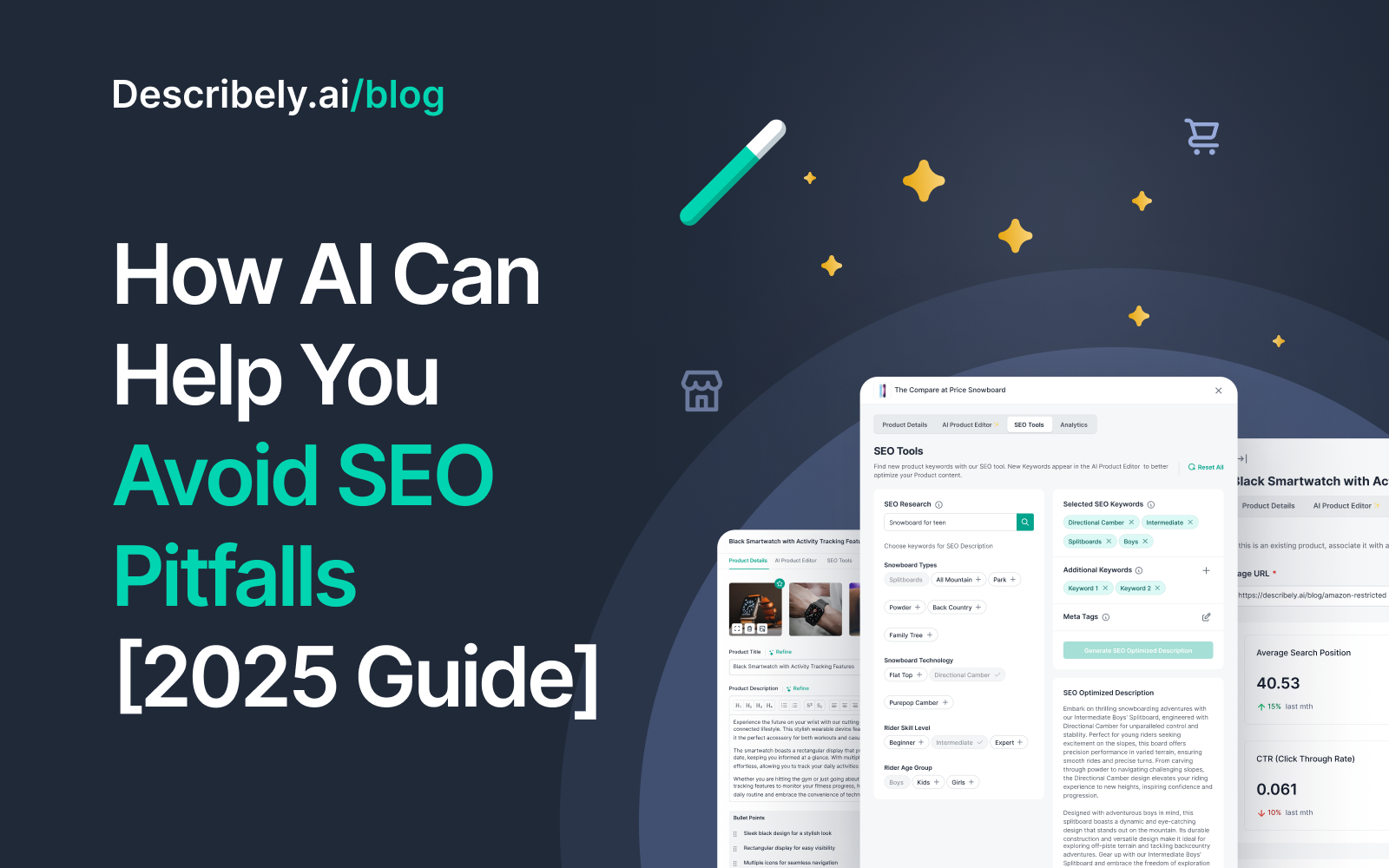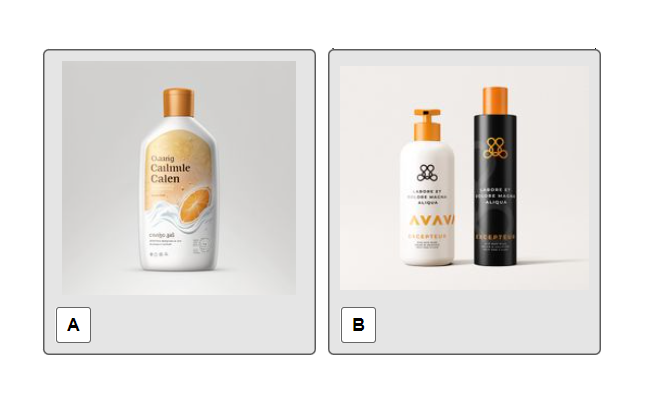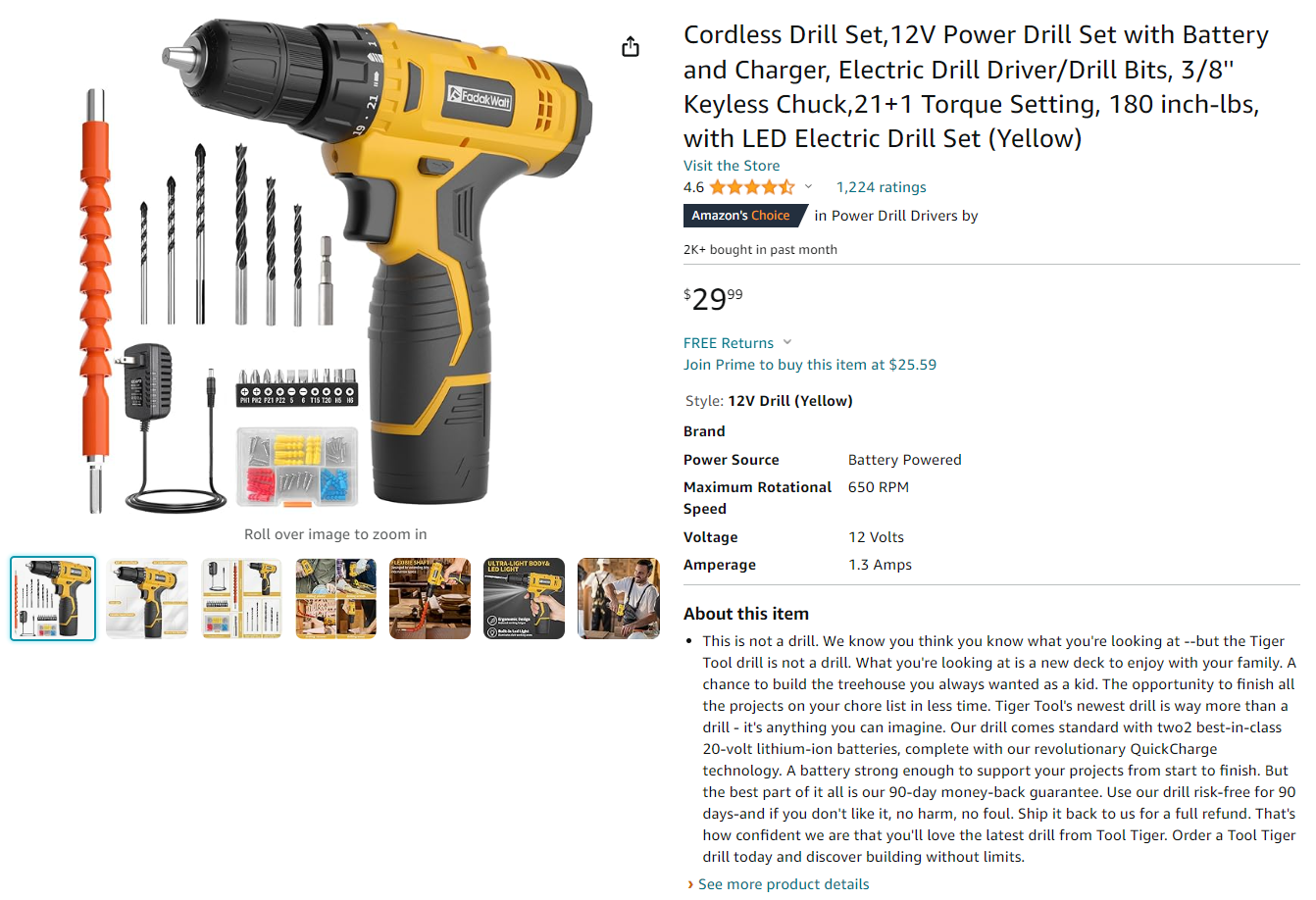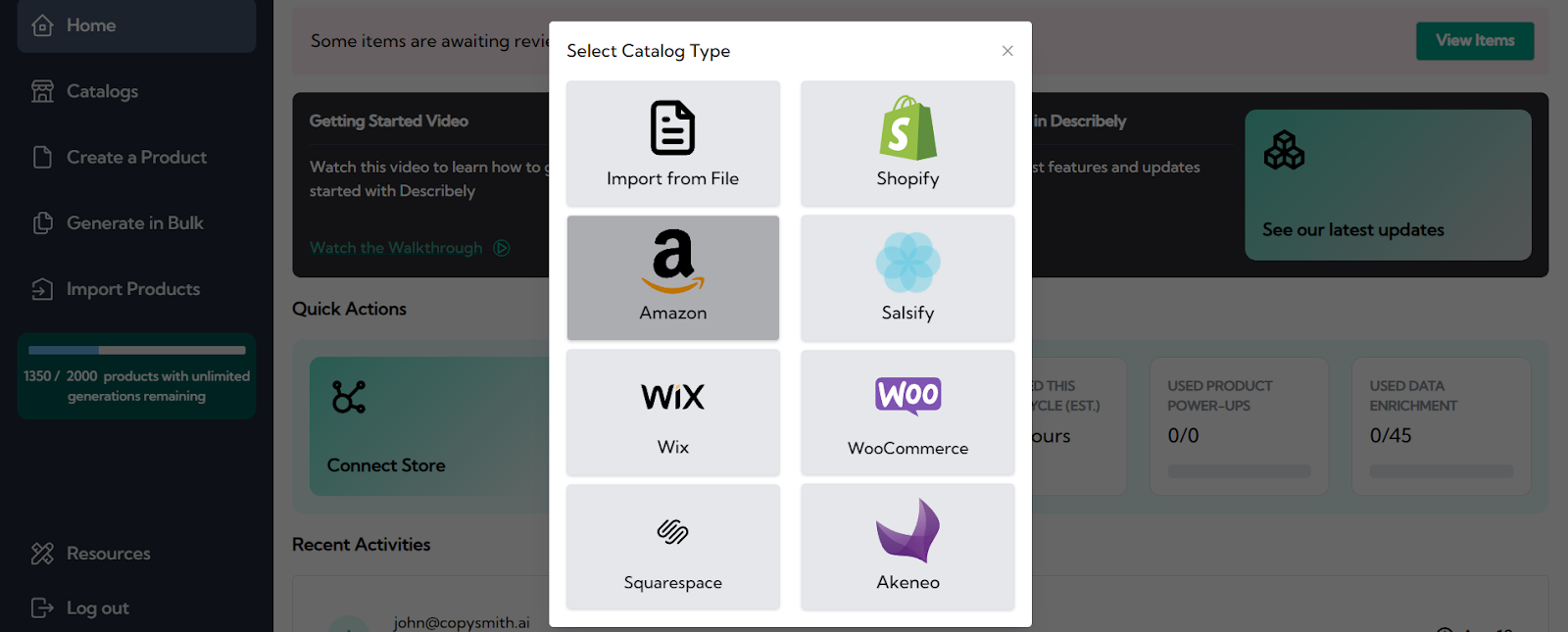
The Case for AI Product Listings + Two Use Cases for Home Decor and Apparel Brands
More retailers are turning to AI product listings to automate the product content creation process and reduce the time it takes to get products online.
So, you might be thinking…
“Is all of the hype worth it?”
Well, in this post we’re going to discuss the case for AI generated product descriptions, drawing on examples that we see over at Describely across large retailers.
We’ll be focusing on home decor and apparel brands since they often have hundreds to thousands of products and variations to create product descriptions for. But, what we cover can apply to any industry.
Let’s dive into it.
Benefits of AI-Generated Product Listings: Improved Efficiency and More Sales
As an eCommerce content team, you may have hundreds of products that need to go live soon.
There’s increasingly more time to spend on updating old products and managing new product lines. Expanding the team doesn’t seem to solve this completely and isn’t always cost-efficient.
That’s why AI can be a great alternative. With AI you can:
- Instantly write hundreds of descriptions based on your rules
- Import, edit, and publish all products at once
- Refresh all outdated listings postponed for months by switching a prompt
As a result, customers find detail-rich product pages with accurate information, leading to more sales and fewer returns, especially compared to manual writing.
For context, this occurs because, according to the stats:
- 70% of customers research online before shopping. However…
- 30% of product data becomes outdated every year. Which is why…
- Inaccurate product descriptions are responsible for up to 64% of returns.
Normally there’s not enough time to fully optimize listings due to tight deadlines, which is why AI can deliver consistently higher quality.
Product descriptions are particularly important for home decor and apparel brands. Generally, these types of products have simple features, detailed attributes, and rely on perceived value to perform well (AKA branding).
So if AI can work for home decor and apparel, then it can work for almost any industry.
That’s why AI generation is even more effective and reliable in these sectors. In fact, here’s what customers think about it.
Do Customers Actually Prefer AI Product Listings?
Let’s say you’re shopping for skincare products and find the images below. Would you know which one AI generated?
A? B? Both? None?
Unclear? Let’s switch the format. Does this sound AI-generated or human-written?
What about this one below?
1,000 people were surveyed (by Nexcess) to recognize these examples. They found that buyers recognize AI images 40-50% of the time. As you may agree, product descriptions were easier for them to recognize than images.
As for the examples, here are the answers:
- The skincare product A is AI-generated
- The frisbee description was AI-generated (you probably wouldn’t even notice)
- The drill description is human-written
There’s also been an AI MIT study leading to similar findings:
“The most direct implication is that consumers really don’t mind content that’s produced by AI. They’re generally OK with it. At the same time, there’s great benefit in knowing that humans are involved somewhere along the line — that their fingerprint is present. Companies shouldn’t be looking to fully automate people out of the process.” – Yunhao Zhang
Keep in mind, participants scored 40-60% while being aware of the test. In everyday shopping unless they tell you upfront, the percentage could be a lot lower for AI recognition.
And as the study suggests, either way consumers keep buying—as long as product descriptions are accurate and clear.
So let’s see how to achieve this with specific examples in home decor and fashion.
Example 1: Expanding Product Catalogs for Fashion & Apparel Brands
The Situation:
You’re working for a large fashion brand that’s expanding product lines and you have a backlog of hundreds of products to create descriptions, titles, and meta descriptions for. You need to write these product descriptions and get them online within a deadline.
The Challenge:
To avoid double-work, every product description has to be accurate and brand-aligned. Achieving this can be costly and time-consuming, especially when splitting attention between new and outdated product pages. Due to tight deadlines, the latter is often postponed resulting in more outdated content.
The Process:
There are various ways to approach this.
- Keep writing and hope that this time it gets done faster
- Expand the team to match the new demand
- Automate the content with AI
When you choose AI, here’s what it could look like:
All you need to do is select the products, customize the AI settings, and press ‘Start Bulk Generate’.
The result is hundreds of product descriptions generated within minutes based on your guidelines.
And if something doesn’t look right, it’s just as easy to edit everything again.
Wrong keywords? Change which ones to include or remove, and click Bulk Generate again.
Want to mention the size and color earlier? Add the prompt and generate again.
Want to keep everything the same but change the title? Unselect the title box, and it’s done.
Of course when you do this at scale, some products start with less information than others.
Usually you’d do more research to fill those gaps, which can be more time-consuming than the writing itself. AI can fix that too:
All you need to do is select the products, start the data enrichment, and you can automatically uncover product information from official supplier websites and listings.
This results in more accurate and detail-rich descriptions the next time you generate content.
From there, you can review all enriched content in a list to quickly edit or approve them. If your AI tool is already optimized for eCommerce, the result will already be accurate enough to avoid spending hours remaking content.
Now, instead of struggling with deadlines, all products can go live the same day with brand-aligned descriptions that sell—including outdated products.
Example 2: Localized AI Product Listings for Home Decor Brands
The Situation:
You manage a fast-growing home decor brand. You start selling in more countries, which involves translating product descriptions into more languages.
The Challenge:
There’s no traditional solution to efficiently translate mass content without sacrificing quality or costs. With translation tools, it’s hard to verify the accuracy. Hiring translators may be reliable, but also expensive and time-consuming at scale.
The Process:
What does this look like with AI? All you need to do is change the language as a prompt.
So if you already like the product description, you can change the language with the same AI rules to get the same result. You have the option to translate directly from the original content or generate new descriptions with the same core details.
Click generate, and you’ll have hundreds of products translated in an instant.
Normally this would overwrite the original English description. One solution for this is to create catalog duplicates for every language, and Describely does this easily.
When you first import products, you create a new catalog. If you import the same list again (from Amazon, Shopify, spreadsheets…), you can create another catalog for the new language.
This means you can keep the original catalog while generating translated descriptions for the other catalogs in an organized way. Then, if you have your store connected, you can publish them all at once on every language version of your store.
(Describely currently supports 12 of the most popular languages)
Now, whenever it’s time to refresh outdated listings, you can follow this faster process without having to outsource or translate it on your own.
Things to Keep in Mind When Creating AI Product Content With AI
Even though AI can save a lot of time, it still involves some oversight due to various limitations. So if today you were to start using AI for hundreds of listings, here’s what to expect:
AI Generation Still Involves Revisions
As you generate more descriptions, you’ll occasionally find a few that don’t fit the mold. They lack product information, use strange keywords, or simply aren’t consistent with the rest.
This is expected. There are tools to minimize this as much as possible — rule customization, data enrichment, keyword filters.
If you choose an AI that’s designed for eCommerce rather than generic, that’s the difference between minor edits and rewriting everything.
One effective method to enhance this process is through reinforcement learning with human feedback (RLHF), which helps fine-tune AI models to better align with human preferences and brand-specific guidelines.
You can reduce this to mere minutes, but not entirely. Always have a human review the generation.
Not Every AI Content Tool Is Built For eCommerce
When it comes to mass product content, every extra step can considerably slow down the content creation process. This is where AIs like ChatGPT often fall short:
- There’s no structure to differentiate the different parts of your product description. It’s all in one response.
- Other AI tools may have product templates but then under-deliver with rigid AIs without customization
At the other end of the spectrum, you have PIM software (product information management) that’s very efficient at automating but doesn’t offer the same AI generation.
Trying to connect both is another extra step.
There’s an alternative, which is AI built for eCommerce (e.g. Describely), meaning it supports both the AI generation and automation.
Final Thoughts on AI: Should You Automate Product Content?
Given the huge time-saving potential, it’s rarely about whether or not to use AI, but rather how to make it work for large stores.
Automated product listings remove a lot of tedious work and might perform better than manually-written products. But as we’ve seen above, you can get widely different results with every tool.
Not only could this mean more content work, but could also affect the brand’s reputation. Fewer product purchases, more returns from inaccurate descriptions, and content that lacks uniqueness.
All of this can be avoided when you set clear content guidelines and find the right AI platform.











